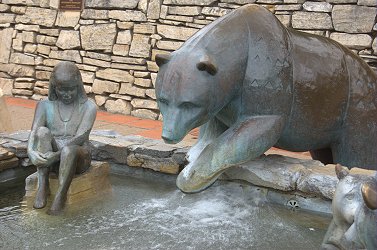|
As if Mowgli, Nanga, Shasta, Pyrénée and Ketrin weren’t enough,
this page contains details of even more fiction, comics,
an animated film, a news item, a statue, and even
an album cover featuring variations on the theme...
If you spot anyhing you feel ought to be included here, please send me the details.
Fiction
(Alphabetical by Author) |
Poul Anderson and Gordon R. Dickson
“Full Pack (Hokas Wild)”
Short story
The Magazine of Fantasy and Science Fiction, October 1957
Hoka! (collection) 1983
Hokas Pokas! (collection) 1998
Text available on line:
Prologue | Story
The Hokas are an ancient and noble alien race who just happen to look like teddy bears. They enjoy human literature but have trouble distinguishing fact from fiction, and so end up acting out variations on famous novels with comic results.
In “Full Pack” a group of Hokas act out their own unique version of the Jungle Book in a tropical bit of their planet, with a human boy and his bemused mother playing Mowgli and Messua. Then things are complicated by the arrival of a trio of visiting aliens who just happen to resemble a monkey, a tiger and a snake.... |
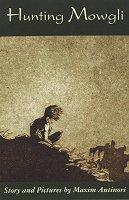 Maxim Antinori
Hunting Mowgli
Bound novelette 2001
Illustrated by the author
A short and frankly rather disturbing re-interpretation of the characters of Mowgli and his enemy Buldeo the hunter. The illustrations are dark, grim and claustrophobic, and one of the major characters dies violently. This is a kids’ story? Well, it sure ain’t Disney! |
Pamela Jekel
The Third Jungle Book
Story collection 1992
Illustrated by Nancy Malick
Hungarian edition:
Maugli: Újabb Dsungeltörténetek
The further adventures of Mowgli, told in a breezy pastiche of Kipling’s style. In fact the prologue pretends that this is a lost Kipling manuscript, but Jekel gives the game away
by letting several modern Americanisms creep into the text. |
Edgar Pangborn
“Tiger Boy”
Short story
Universe 2 (anthology) Edited by Terry Carr 1972
Illustrated by Alicia Austin [top left]
Still I Persist in Wondering (collection) 1978
(Uncredited cover [top right] illustrates “Tiger Boy”)
Translated into German as Tiger Boy. It’s interesting that the Germans renamed the collection after this story, but their cover art is absolutely atrocious so I haven’t reproduced it here.
Art commission by Inspector97 (John Ridley) on deviantArt: Bruno meets Tiger Boy [bottom]
Part of a series (also including the novels Davy and The Company of Glory) in which North American civilisation rebuilds itself painfully in the decades and centuries following a nuclear war. The title of the posthumously-published collection, which also serves as its epigram, is spoken by a character in one of the stories: “And still I persist in wondering whether folly must always be our nemesis”.
Bruno is a mute teenage villager who composes poems that no one hears. Tiger Boy is a strange naked youth who wanders the wilds with his tiger. When the two meet they immediately become friends (and, it’s strongly implied, lovers).
Bruno decides to run away with Tiger Boy, but the superstitious villagers believe Tiger Boy is a
demon or a sorcerer and set out to apprehend him at all costs, with tragic consequences for all. |
Gene Wolfe
“The Tale of the Boy called Frog”
Short story
The Sword of the Lictor
Sword & Citadel (omnibus of two books)
A story within a novel (part of the Book of the New Sun series), which deftly combines the stories of Moses, Romulus and Remus, “Mowgli’s Brothers” and the Thanksgiving story! |
Jane Yolen
Passager
Short novel 1996
Based on the short story “The Wild Child” 1986
The Young Merlin Trilogy: Book One (followed by Hobby and Merlin)
According to Yolen (the self-proclaimed “Hans Jewish Andersen” of American literature) the great wizard was abandoned in the forest as a small child and left to fend for himself for a year before being caught and ‘tamed’ by a falconer who is used to dealing with wild things. It’s certainly a new spin on Arthurian legend. And no...the title is not a misspelling of “Passenger”! Yolen defines the word as “a falcon caught in the wild and trained by a falconer but not yet a mature bird”. |
Comics
(Alphabetical by Title) |
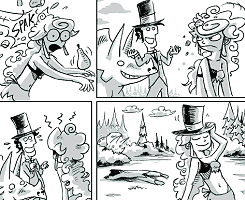 Dawn of Time Dawn of Time
Script and art: Michael Stearns
Webcomic, 2008 - 2011 (305 strips)
Read from the beginning | Final strip
Dawn is a crazy teenage cavegirl in a world where humans and dinosaurs live side by side. (click to see what TVTropes has to say about that!) The title and the first few strips imply that she’s a primitive in a savage, untamed world, but later on it becomes clear that things aren’t quite as they seem and she’s actually much more primitive than everyone else. Dawn is not exactly raised by wolves [another TVTropes link] (which after all haven’t evolved yet, although this strip implies that she was raised by a Neanderthal) but she certainly seems to fit the feral child mould. She doesn’t speak the local language, and appears to get on a lot better with her pet triceratops Blue than with her fellow human beings. Nevertheless, she and Blue eventually strike up a friendship with a stranded Victorian time traveller, and the three of them have lots of wacky adventures. Then it gets weirder. The series only ran to 305 strips (though fans are still hoping that Stearns may pick it up again some day), so unlike some webcomics it shouldn’t cause you to suffer from archive panic!
|
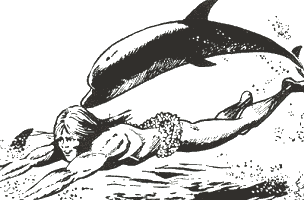 Fishboy: Denizen of the Deep Fishboy: Denizen of the Deep
Script: Scott Goodall (uncredited)
Artists: various, including John Stokes (uncredited)
Buster (UK comic) 1968 - 1975
Black and white strip
Abandoned on a remote island as a baby, Fishboy somewhat implausibly learns how to breathe underwater (!!!) and communicate with sea creatures. He wears woven seaweed swimming trunks with a shoulder strap. For many years he wanders the world’s oceans, helping people in trouble along the way, as he searches for his parents. I can’t recall if he ever finds them....
2-page Fishboy strip with art by Stokes (cleaned up and combined as a single image)
|
Kid Chameleon
Script: Scott Goodall (uncredited)
Artist: Joe Colquhoun (uncredited)
Cor!! (UK comic) 1970 - 1972
Colour strip
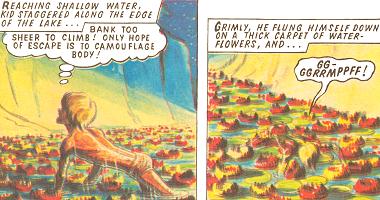 After the murder of his parents a white boy grows up in the remote Kalahari desert and learns to communicate with reptiles. He wears flesh-coloured briefs and a skin-tight suit of lizard scales which he can cause to change colour at will, thereby camouflaging himself (actually of course the artist just draws his body as a transparent outline). The accompanying image is from one of the few Kid Chameleon strips I still have. It’s a bit blurry because the colours are printed out of register (as they were all too often), but it demonstrates the principle behind his camouflage. Changing colour apparently takes an effort, judging by the grunts he always emits while doing it! He too wanders the world, searching for his parents’ killer, whom he eventually finds and turns over to the authorities before returning to the Kalahari. After the murder of his parents a white boy grows up in the remote Kalahari desert and learns to communicate with reptiles. He wears flesh-coloured briefs and a skin-tight suit of lizard scales which he can cause to change colour at will, thereby camouflaging himself (actually of course the artist just draws his body as a transparent outline). The accompanying image is from one of the few Kid Chameleon strips I still have. It’s a bit blurry because the colours are printed out of register (as they were all too often), but it demonstrates the principle behind his camouflage. Changing colour apparently takes an effort, judging by the grunts he always emits while doing it! He too wanders the world, searching for his parents’ killer, whom he eventually finds and turns over to the authorities before returning to the Kalahari.
The fact that Scott Goodall wrote both Fishboy and Kid Chameleon explains their many obvious similarities...and implausibilities! Individual issues of these comics may be hard to come by nowadays, but annuals and summer specials tend to crop up more frequently. |
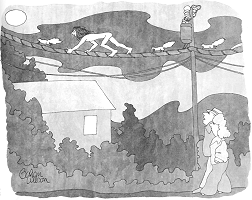
“They say he was abandoned by summer people and raised by squirrels.” |
Squirrel Boy
Cartoon by Gahan Wilson
Even Weirder, 1996
Published previously in The New Yorker.
RIP Gahan Wilson 1930-2019.
I previously suggested this may have been printed in colour, but it seems that’s not the case after all. Pity.
It’s surprising just where the concept of feral chidren sometimes turns up. Gahan Wilson has been called the finest macabre cartoonist since Charles Addams, though this one’s actually quite mild by his standards.
I think the suirrel boy is cute, although I imagine he’s a bit nutty (groan). I like to call him Squigli (bigger groan). |
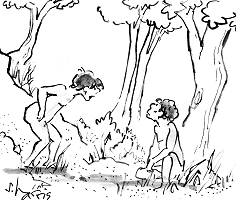
“Coyotes? That’s weird. I had a normal childhood, brought up by wolves.” |
Coyotes?
Cartoon by S. Harris
Just an everyday encounter between two feral kids... |
| Film |
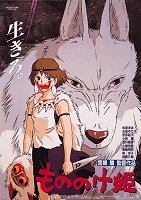 Princess Mononoke (original title: Mononoke Hime)
Animated film
Hayao Miyazaki (writer and director), Japan 1997
US release (English dubbed version) 1999
IMDB entry
Feudal Japan: “Princess Mononoke” (meaning Demon or Beast-Spirit) is the name the townsfolk give to San, a girl raised in the forest by the giant two-tailed wolf goddess Moro. San’s attempts to defend the forest and its gods bring her into direct conflict with Lady Eboshi, who is attempting to establish a new town where people can be free from a repressive government. Unfortunately her town’s economic prosperity is based on iron, for which the forest needs to be cleared, and the more the humans encroach upon the forest the deadlier the conflict becomes. Attempting to reconcile the two sides is the young Prince Ashitaka, who has received a cursed wound as a result of the conflict.
Princess Mononoke was (and possibly still is) the most successful Japanese-made film ever, second only to Titanic at the Japanese box office. It’s hard to imagine an animated film becoming the most successful movie in America or Britain. Miyazaki has been called Japan’s Walt Disney, and in technical and artistic terms his films are at least as good if not better than Disney’s. They are certainly better than most of the anime that make it to the West. Unlike Disney, however, there are no clear-cut heroes and villains in Miyazaki’s films. All of his characters have complex motivations, and none of them is entirely good or evil. Fortunately the English dubbed version has a script by Neil Gaiman (author of the Sandman comic, not to mention The Graveyard Book, which owes more than a little to you-know-what) that is sensitive to the more subtle nuances of the original Japanese version rather than being a bluntly literal translation. |
| Album Cover |
Bad Company
Run With The Pack
Swan Song 1976
Paul Rodgers and his band with a classic slice of melodic rock from the seventies, including such classic songs as “Sweet Lil’ Sister”, “Silver, Blue And Gold”...and of course the title song.
UPDATE: The mystery of where the cover art came from is now solved! I managed to find a bunch of clipart images taken from Kipling Stories and Poems Every Child Should Know (New York: Doubleday, Page and Company, 1915), and one of the images is clearly the source of the album cover, the only difference being that on the album it’s printed in reverse.
You’ll find more images from this set by going to the Homepage and looking under “CLIPART ETC. IMAGES”.
Run With The Pack (title song:)
You never give me my money, you only give me your sympathy
’Cause I keep on running, there is no way to catch up with me
I’m leaving you, don’t make no fuss
You won’t even see me, oh no, for dust
Chorus:
I’m running with the pack, running with the pack
I’m running with the pack, never looking back
You try to keep me In cages, but baby, you got to catch me first
You think your love is contagious; I’ll do my best, you can do your worst
I’m leaving you, now who can I trust?
You won’t even see me, oh no, for dust
Chorus (repeat twice)
You can’t hold me now......
On my own way, running with the pack
Never, never looking back
Keep on running, keep on running
Movin’ on, movin’ on |
| News Item |
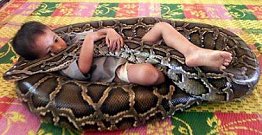 Thu May 22, 2003, 9:33 AM ET Thu May 22, 2003, 9:33 AM ET
SIT TBOW, Cambodia (Reuters) - Cambodians are flocking to see a three-year-old boy they believe was the son of a dragon in a former life because his best friend is a four-meter-long python.
Curled up for an afternoon snooze inside the coils of his scaly companion, the child, Oeun Sambath, attracts regular visits in the impoverished southeast Asian nation from villagers anxious to make use of what they believe are his supernatural powers.
“He has been playing with the python ever since he could first crawl,” said his mother Kim Kannara, who is perfectly happy to allow her son to sleep cheek-by-jowl with the giant constrictor even though it could easily have him for dinner.
Traditional beliefs are still strong in Cambodia and it was not long before the boy’s friendship with the female snake -- called Chamreun or ‘Lucky’ -- prompted a fortune teller to declare he must have been the son of a dragon in a previous life.
His special powers will probably make him a traditional healer at the age of seven, but meanwhile the bond between boy and snake is limiting the movements of the family.
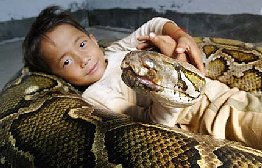 “I don’t know what is special about the relationship between my son and the snake -- whether they were related in their previous lives -- but they certainly can’t be separated,” Kim Kannara said. “I don’t know what is special about the relationship between my son and the snake -- whether they were related in their previous lives -- but they certainly can’t be separated,” Kim Kannara said.
“I once took my son off to the provinces, but we couldn’t stay because my son was missing Chamreun so much.”
UPDATE:
In June 2006 some new photos of Ouen, now aged 6, and Chamreun were flashed around the world, accompanied by some text that looked suspiciously as if it had just been cut and pasted from the earlier article. It’s nice to know the two of them are still friends, though it’s probably just as well for his parents to remain slightly wary of the snake’s behaviour.
And that’s all that was heard of Ouen as far as I know. By the time I write this he’d be in his mid-20s.
I hope he and Chamreun are still OK.
Compare:
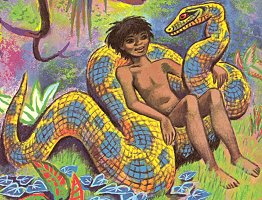 That afternoon Mowgli was sitting in the circle of Kaa’s great coils, fingering the flaked and broken old skin that lay all looped and twisted among the rocks just as Kaa had left it. Kaa had very courteously packed himself under Mowgli’s broad, bare shoulders, so that the boy was really resting in a living armchair. That afternoon Mowgli was sitting in the circle of Kaa’s great coils, fingering the flaked and broken old skin that lay all looped and twisted among the rocks just as Kaa had left it. Kaa had very courteously packed himself under Mowgli’s broad, bare shoulders, so that the boy was really resting in a living armchair.
- Rudyard Kipling, The King’s Ankus, 1895.
|
| Statue |
Tuquski’ Wa Suwa (Bear and Child)
Statue by Paula Zima, 1988 (with later additions)
Mission Square, San Luis Obispo, California.
More photos here.
This stylised fountain statue of a loincloth-wearing child fishing with a bear can be found near the old mission house in San Luis Obispo on the California coast. It could easily be a portrait of Mowgli or Pyrénée, but in fact it’s meant to represent a girl of the local Chumash people. The sculptor later added separate figures of a pair of bear cubs and a trout, and all the pieces work together as an ensemble.
|
Pyrénée | Kipling and Ketrin and Mowgli and Me
Ketrin Series Index | Return to Top of Page
|

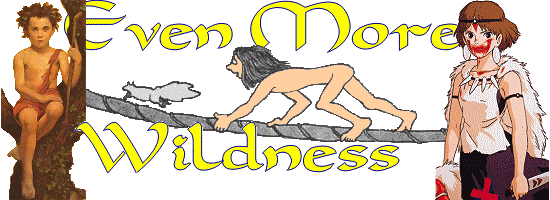
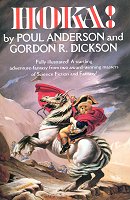
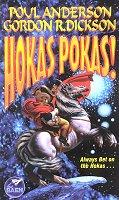
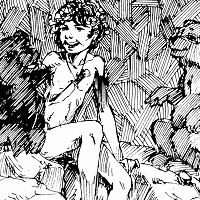

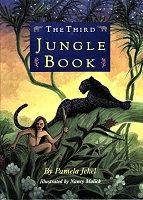
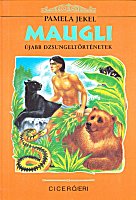
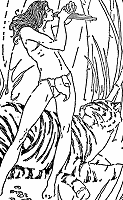
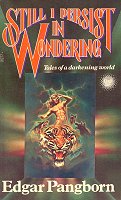
-tiger-boy-da-tn.png)
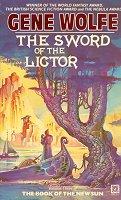
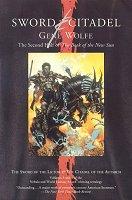
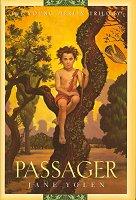
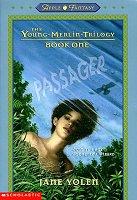
 Dawn of Time
Dawn of Time Fishboy: Denizen of the Deep
Fishboy: Denizen of the Deep After the murder of his parents a white boy grows up in the remote Kalahari desert and learns to communicate with reptiles. He wears flesh-coloured briefs and a skin-tight suit of lizard scales which he can cause to change colour at will, thereby camouflaging himself (actually of course the artist just draws his body as a transparent outline). The accompanying image is from one of the few Kid Chameleon strips I still have. It’s a bit blurry because the colours are printed out of register (as they were all too often), but it demonstrates the principle behind his camouflage. Changing colour apparently takes an effort, judging by the grunts he always emits while doing it! He too wanders the world, searching for his parents’ killer, whom he eventually finds and turns over to the authorities before returning to the Kalahari.
After the murder of his parents a white boy grows up in the remote Kalahari desert and learns to communicate with reptiles. He wears flesh-coloured briefs and a skin-tight suit of lizard scales which he can cause to change colour at will, thereby camouflaging himself (actually of course the artist just draws his body as a transparent outline). The accompanying image is from one of the few Kid Chameleon strips I still have. It’s a bit blurry because the colours are printed out of register (as they were all too often), but it demonstrates the principle behind his camouflage. Changing colour apparently takes an effort, judging by the grunts he always emits while doing it! He too wanders the world, searching for his parents’ killer, whom he eventually finds and turns over to the authorities before returning to the Kalahari.


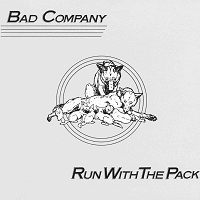
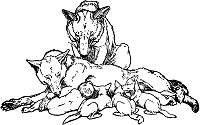
 Thu May 22, 2003, 9:33 AM ET
Thu May 22, 2003, 9:33 AM ET “I don’t know what is special about the relationship between my son and the snake -- whether they were related in their previous lives -- but they certainly can’t be separated,” Kim Kannara said.
“I don’t know what is special about the relationship between my son and the snake -- whether they were related in their previous lives -- but they certainly can’t be separated,” Kim Kannara said. That afternoon Mowgli was sitting in the circle of Kaa’s great coils, fingering the flaked and broken old skin that lay all looped and twisted among the rocks just as Kaa had left it. Kaa had very courteously packed himself under Mowgli’s broad, bare shoulders, so that the boy was really resting in a living armchair.
That afternoon Mowgli was sitting in the circle of Kaa’s great coils, fingering the flaked and broken old skin that lay all looped and twisted among the rocks just as Kaa had left it. Kaa had very courteously packed himself under Mowgli’s broad, bare shoulders, so that the boy was really resting in a living armchair.